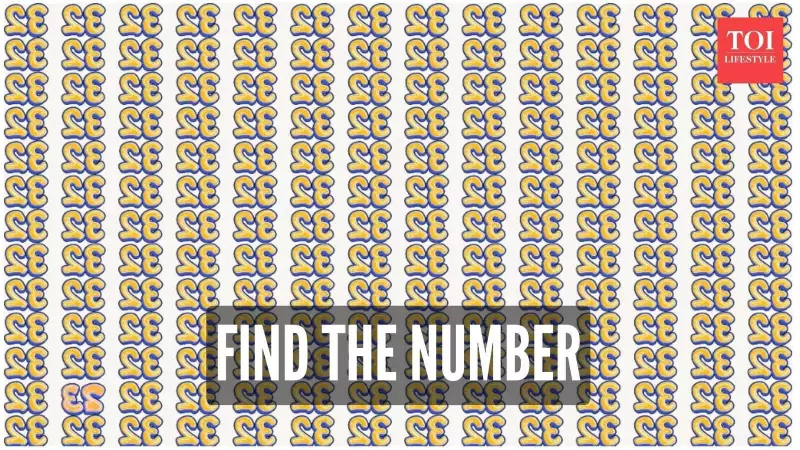
A new visual puzzle is taking the internet by storm, challenging users to test their observation skills in a clever and deceptive way. What appears to be a simple grid of numbers quickly reveals itself to be a tricky test of focus and attention to detail.
The Viral Visual Challenge
At first glance, the image shows what seems to be a sea of identical numbers - all appearing to be 32s scattered across the screen. However, there's a clever twist hidden in this numerical pattern. Somewhere among these seemingly identical numbers lies a single 23, waiting to be discovered by only the most observant viewers.
The challenge has gained viral status due to its deceptive simplicity. While every number looks like 32 initially, the key lies in understanding that they're all presented upside down. This inversion plays tricks on our brain's natural pattern recognition abilities, making the hidden 23 exceptionally difficult to spot.
Why This Puzzle Tricks Your Brain
The effectiveness of this brain teaser lies in how our minds process visual information. When we see repeated patterns, our brain automatically groups similar elements together to process information more efficiently. This phenomenon, known as pattern recognition, helps us navigate the world quickly but can cause us to overlook subtle differences.
In this particular puzzle, the inverted numbers create additional confusion. When flipped upside down, the shapes of numbers 2 and 3 can appear remarkably similar to 3 and 2, especially when viewed in a large group. This visual similarity is what makes locating the single 23 so challenging.
How to Solve the Puzzle
If you've been struggling to find the hidden number, here's a helpful hint: direct your attention toward the bottom right corner of the image. Somewhere in that area, camouflaged among the inverted 32s, the elusive 23 awaits discovery.
The key to spotting it lies in carefully examining the curves and lines of each number. Notice how the shape of "2" and "3" differs slightly from "3" and "2" when viewed upside down. The subtle variations in the numerical curves become more apparent when you slow down and examine each element individually rather than scanning the pattern as a whole.
According to psychologists, exercises like this provide valuable mental training. They help improve visual perception and attention to detail, skills that prove useful in everyday situations beyond puzzle-solving. Whether you're proofreading documents, identifying errors in code, or simply trying to find a friend in a crowded place, enhanced observation skills make significant differences.
If you managed to spot the hidden 23 in under ten seconds, congratulations! This indicates excellent focus and quick thinking abilities. If it took longer, don't be discouraged - regular practice with such puzzles can significantly improve your ability to detect visual inconsistencies.
Optical illusions like this one serve as important reminders that our perception isn't always accurate. They challenge our brain's automatic processing and encourage us to look more carefully at what's actually presented rather than what we assume is there.





